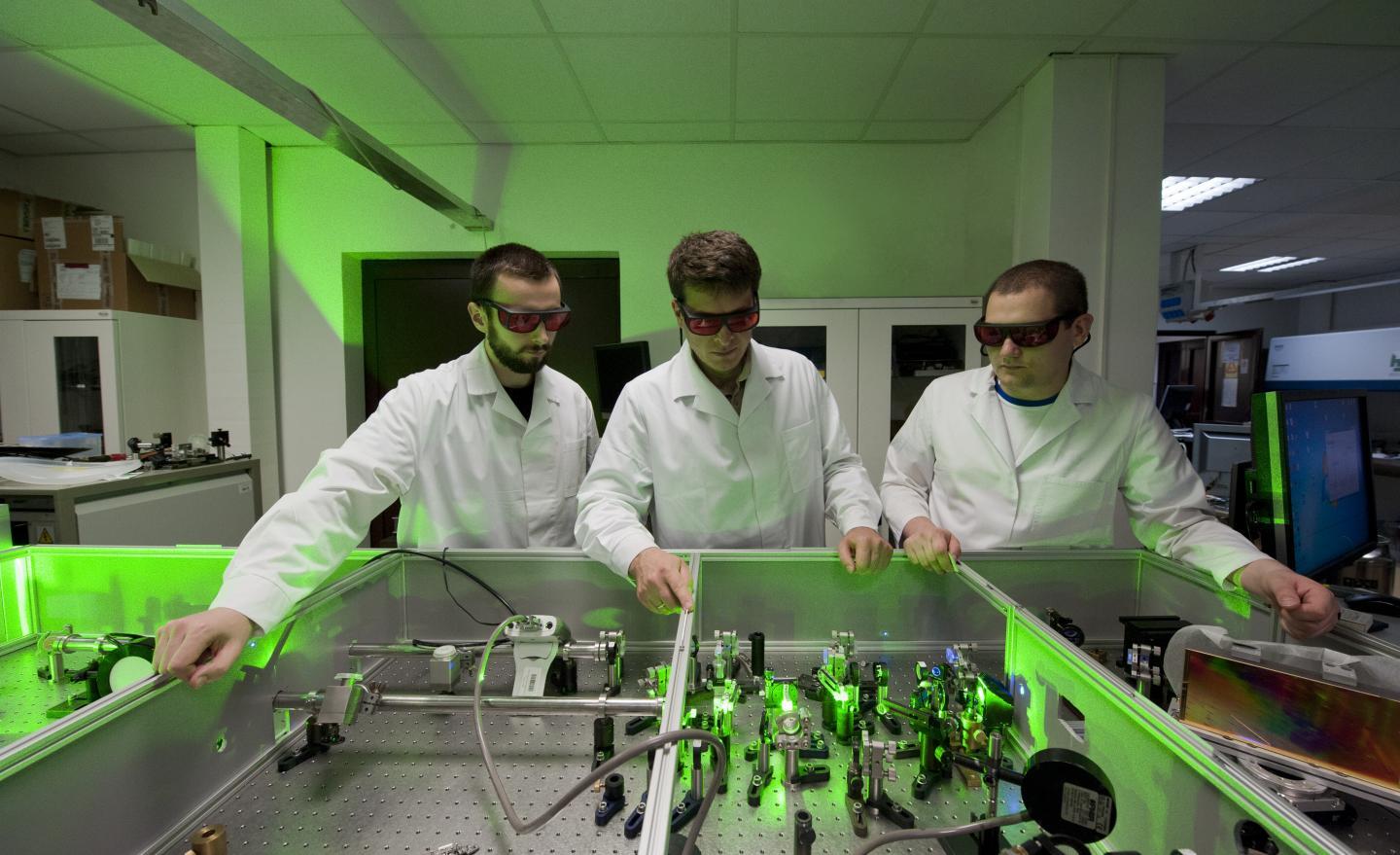It's no secret that Star Wars is full of scenes that defy the laws of physics. From space battles inspired by WW I and II dogfights to beams of light clashing in lightsaber duels. The laser bolts fired from Han Solo's trusty blaster and Luke's X-wing also play by their own rules, traveling much slower than the speed of light and being perfectly visible in the vacuum of space. Researchers in Poland have now created a film to show what a laser bolt would actually look like.
The team at the University of Warsaw's Laser Centre of the Institute of Physical Chemistry of the Polish Academy of Sciences (IPC PAS) and Faculty of Physics (FUW) constructed a compact high-power laser that generates ultrashort laser pulses with a power of over 10 terawatts. The pulse, which last a dozen or so femtoseconds, are so powerful that they almost immediately ionized the atoms they encountered as they pass through the air, resulting in a plasma filament forming alongside the pulse.

By balancing the complex interactions between the pulse's electromagnetic field and the plasma filament, the team was able to make the laser light beam self-focusing so it didn't disperse in the air. This allowed the pulse to maintain its original parameters for much greater distances than low-power pulses.
"It is worth noting that although the light we are shooting from the laser is in the near infrared range, a laser beam like this traveling through the air changes color to white," said Dr. Yuriy Stepanenko, who led the team responsible for the construction of the laser. "This happens since the interaction of the pulse with the plasma generates light of many different wavelengths. Received simultaneously, these waves give the impression of white."
Because capturing the pulse traveling at the speed of light would require a camera capturing billions of frames per second in one sequence, the team resorted to a bit of camera trickery. Instead of capturing one pulse, the team synchronized a specially adapted camera with the laser generating pulses at a rate of around 10 shots per second. With each frame, the camera recorded subsequent pulses when were slightly further along their path than the one preceding it, resulting in a sequence that appears to show a single pulse traveling in slow motion.

"In fact, a different laser pulse can be seen in every frame of our film," explains Dr. Paweł Wnuk. "Luckily, the physics always stays the same. So, on the film one can observe all the effects associated with the movement of the laser pulse in space, in particular, the changes in ambient light depending on the position of the pulse and the formation of flares on the walls when the light passes through the dispersing cloud of condensed water vapor."
You can check out the results in the team's video below.
Source: IPC PAS







